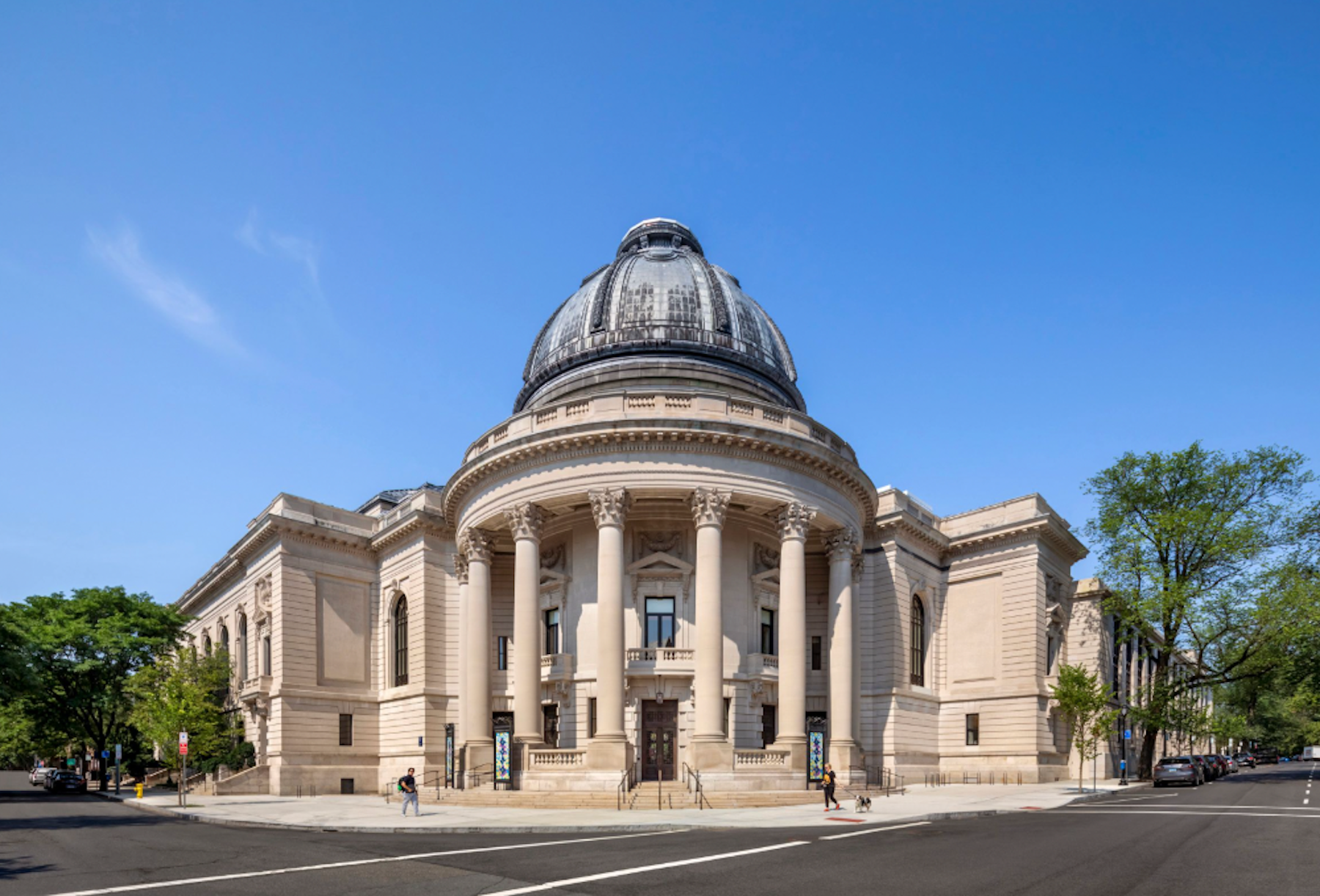Robert A.M. Stern Architects (RAMSA) has unveiled the design of their restoration of the Schwarzman Center at Yale University, which includes dining spaces, a bar, and a food shop. The renewed 123,000-sf center will consist of many features to promote social life on campus.
The transformation of the Schwarzman Center was led by the RAMSA team, and includes historical preservations and the design of new additions.
“The project creates a new campus center designed to connect students, faculty, alumni, and visitors through dining and events,” says Melissa DelVecchio, Partner at RAMSA.
Combining Historic Preservation With Modern Technology
The actual physical expression of the building represents RAMSA’s and the university’s efforts to combine historic preservation, modern technology, and social space. RAMSA’s preservation efforts focused specifically on the Commons, Memorial Hall spaces, War Memorial spaces, the President’s Room, and the Dome Room.
The team removed one-story underground moat space along Grove Street and built a three-storey addition, which was inspired by the original proposal from Carrère & Hastings that detailed an addition to the building’s original construction about 120 years ago. An underground addition was also added and the new Hewitt Plaza was created.
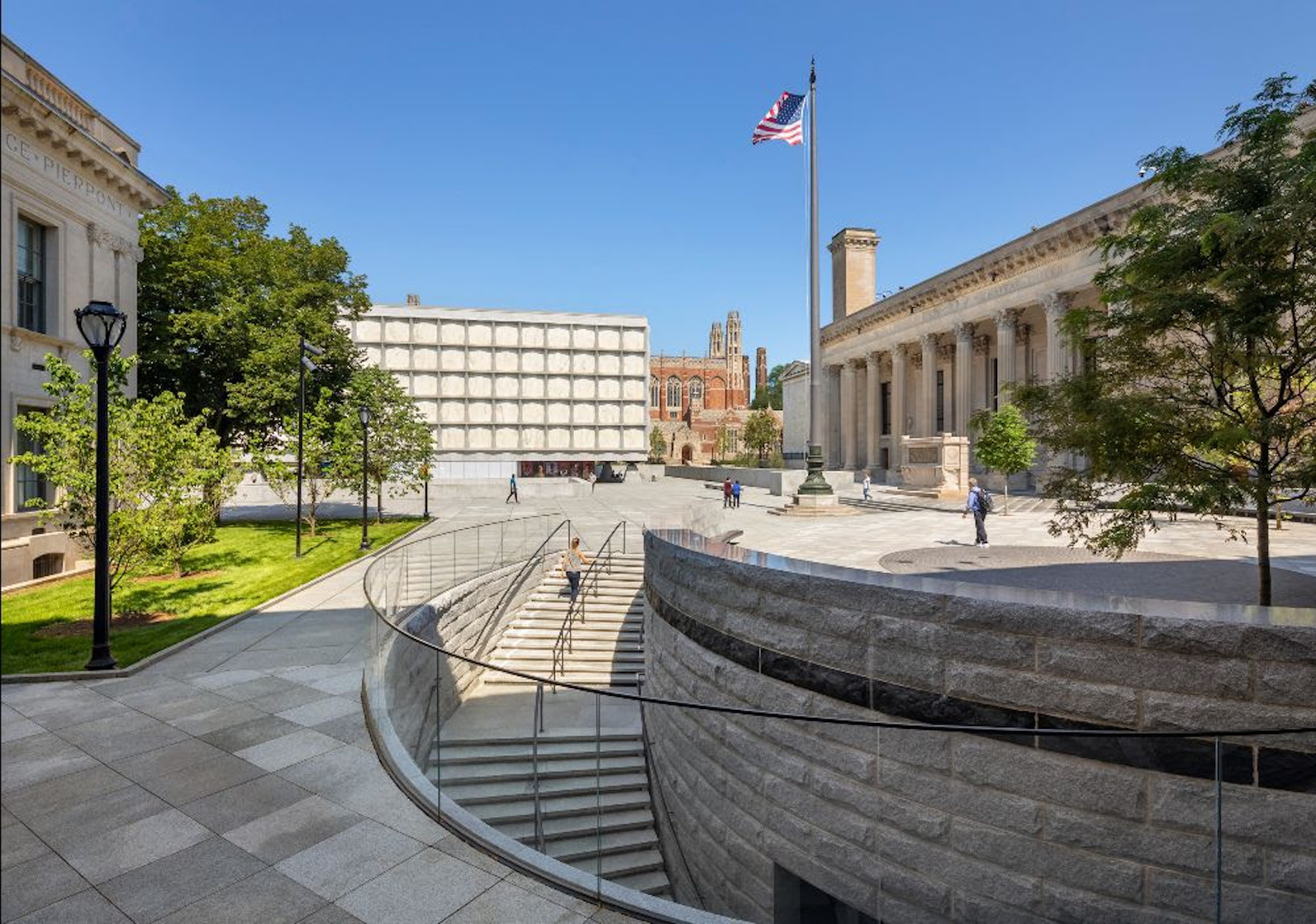
Recreating The Commons
The 66-ft-high dining hall, the Commons was deeply cleaned and preserved after about a century’s worth of smoke and grime. The foundation in this portion was found to be severely deteriorated. As a result, the team decided to dig up and rebuild the foundation.
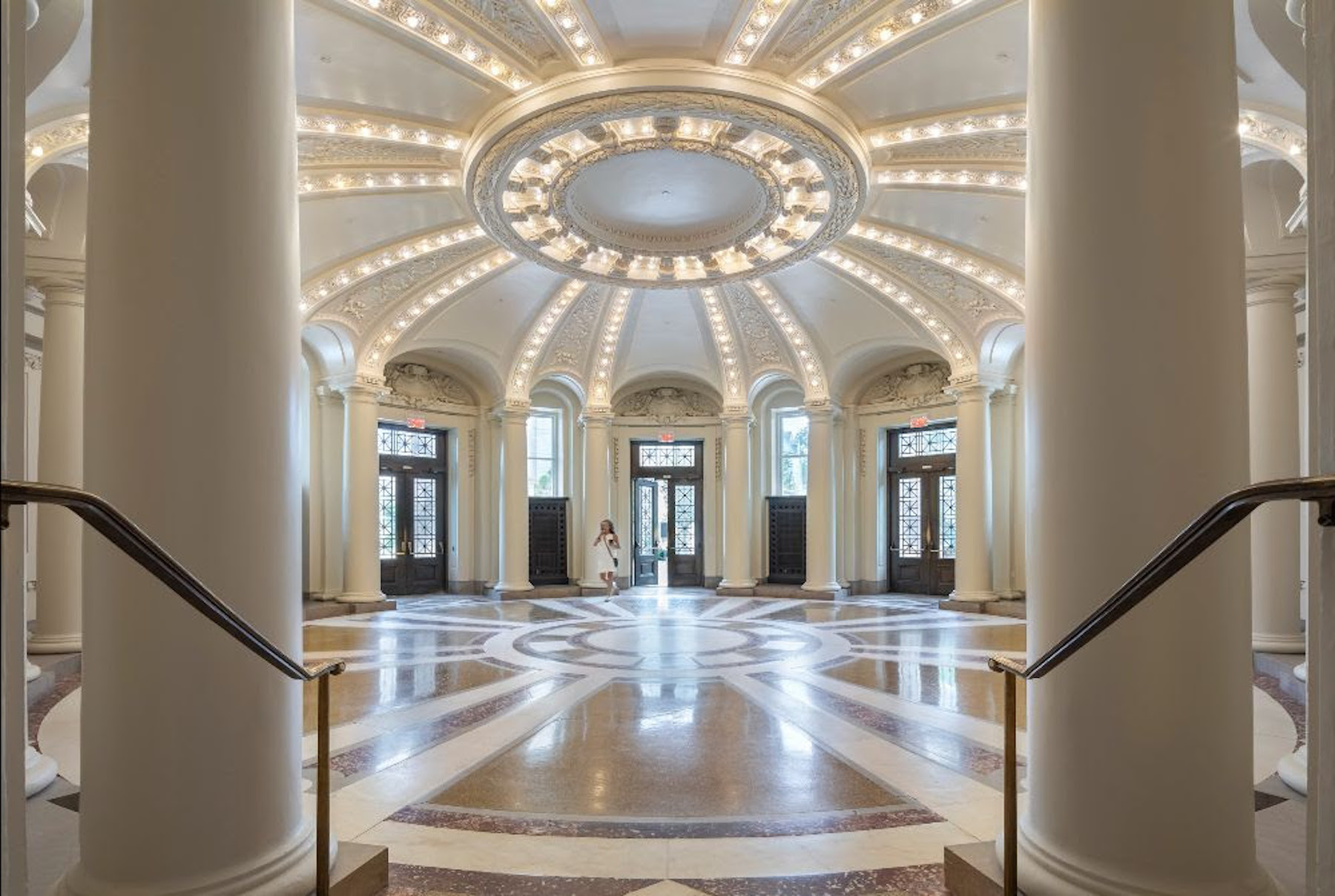
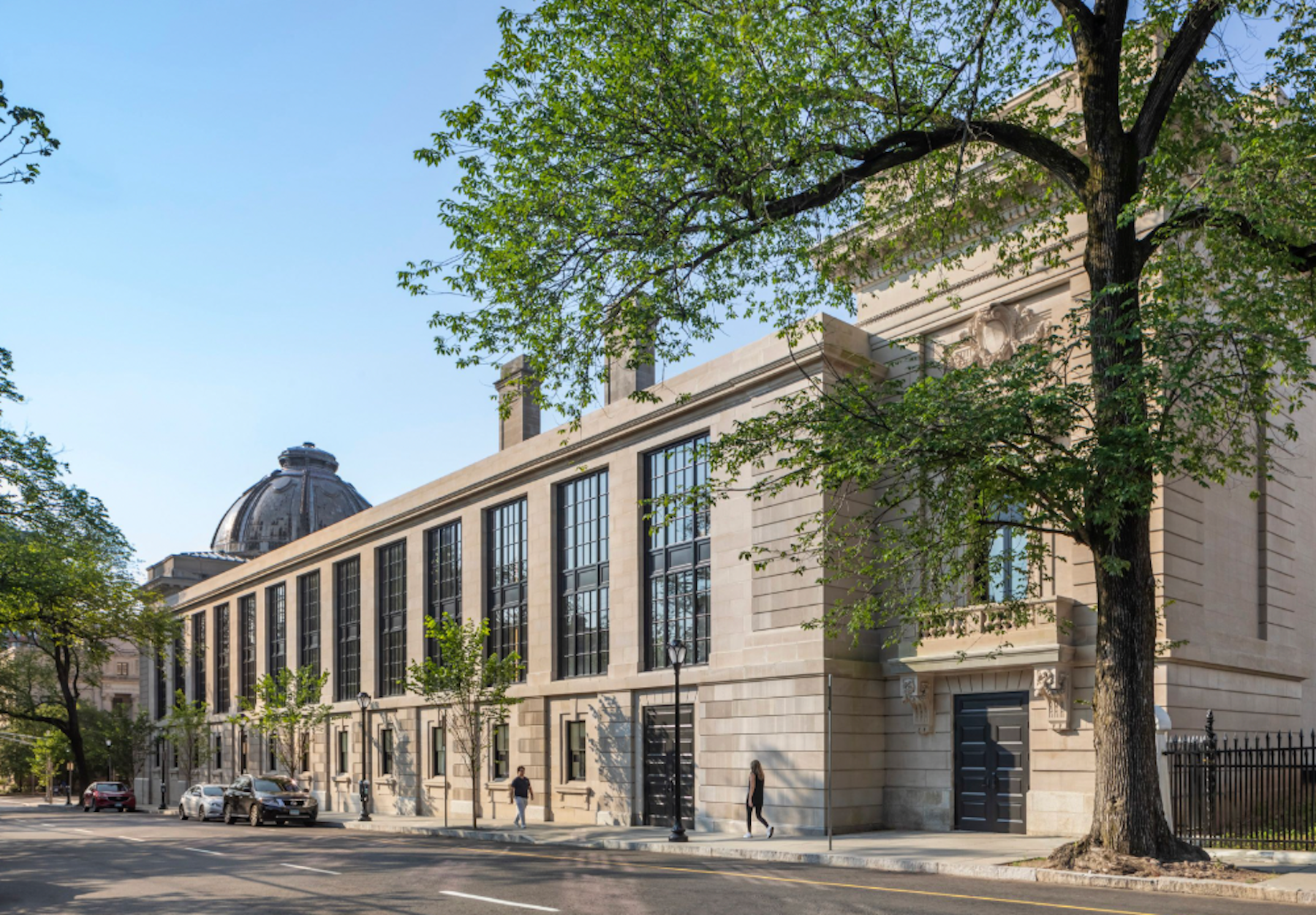
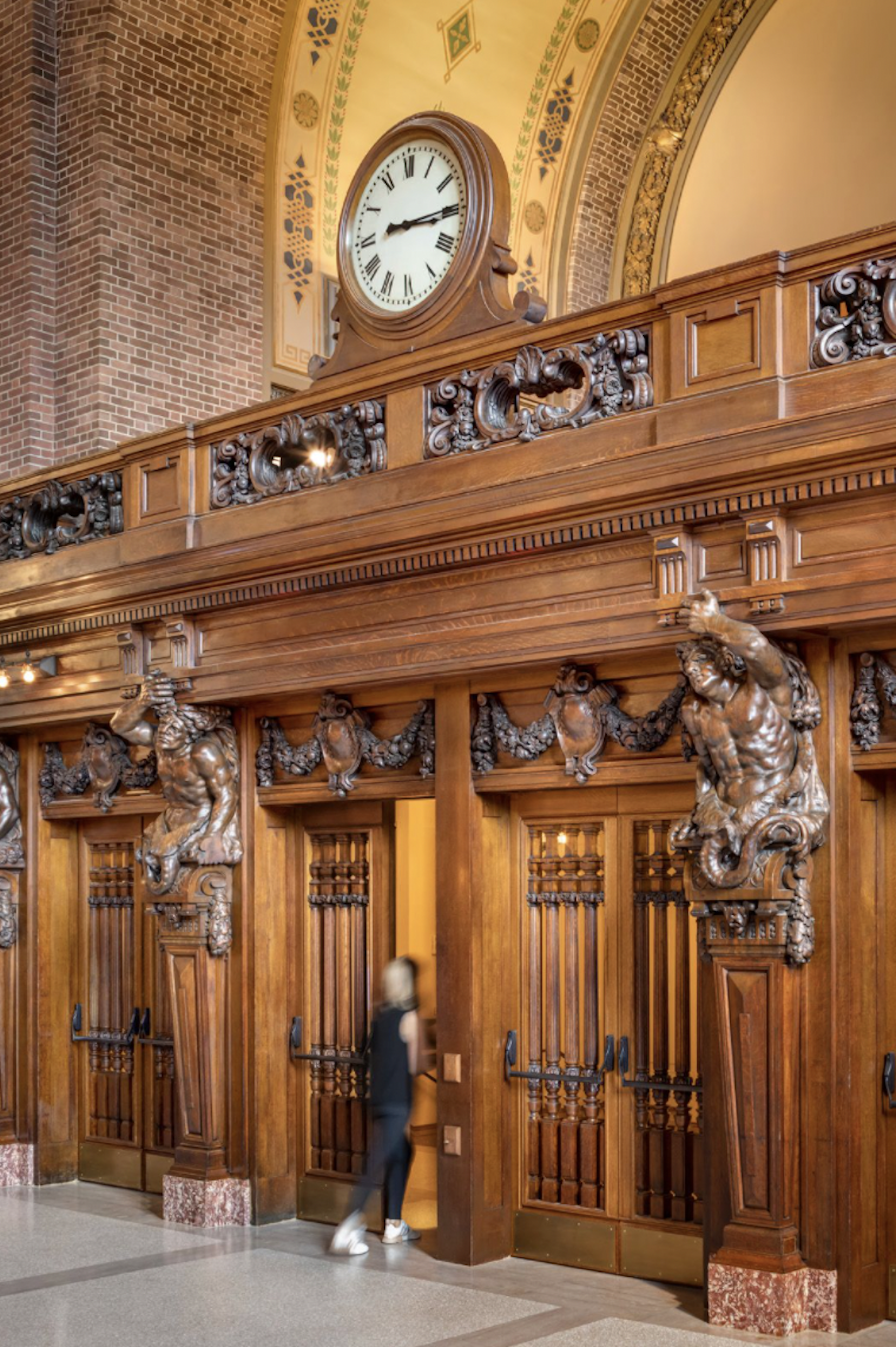
Other Dining And Performance Spaces:
- A casual dining space with a stage, backstage area, and partition
- Flexible performance space, and doubles as a space for masterclasses, events and lectures
- A bar occupying the former food storage space under the Rotunda
- The Bow Wow-food shop
- Renovated and designed to allow for important events hosted in the Yale calendar
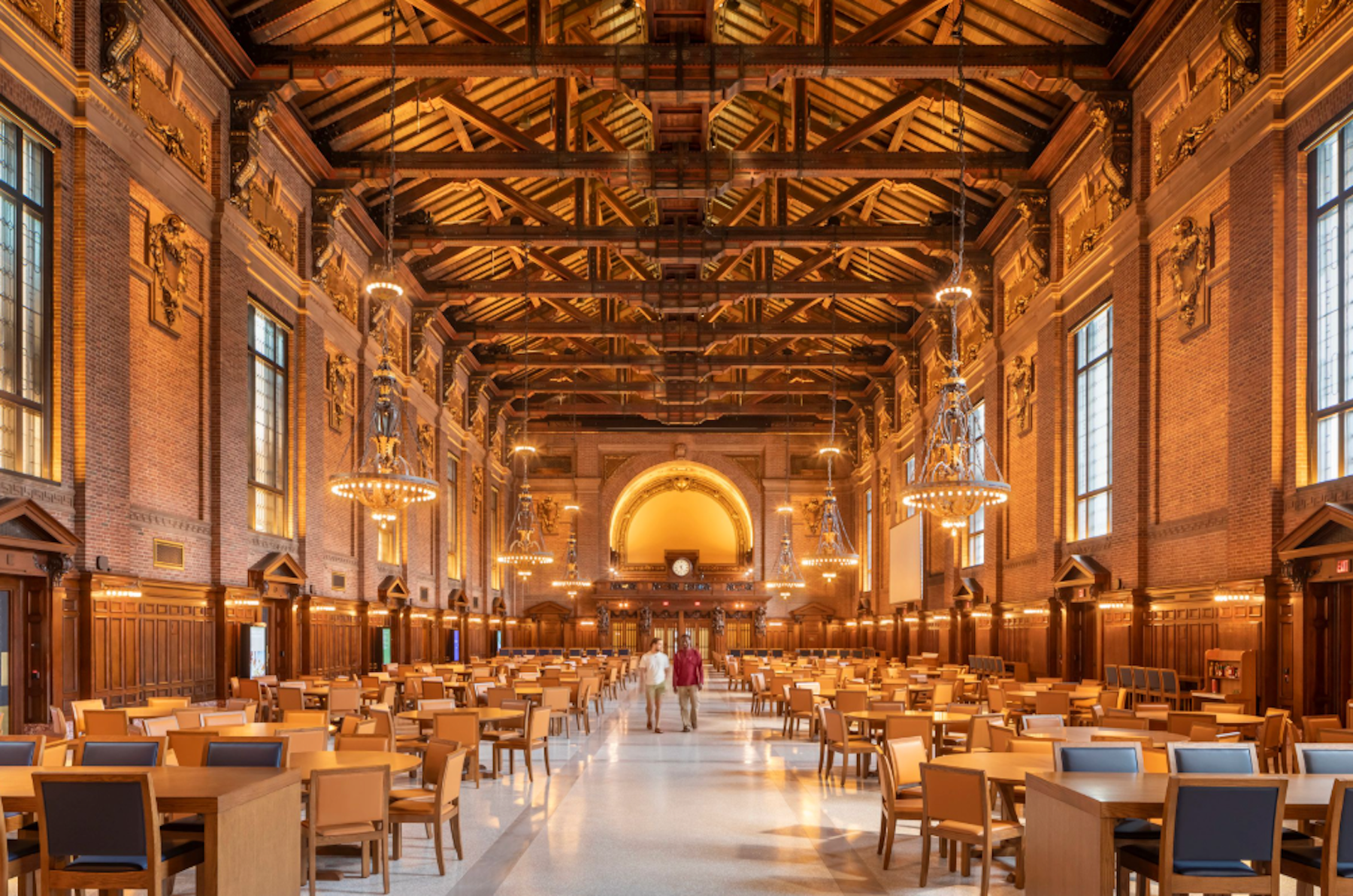
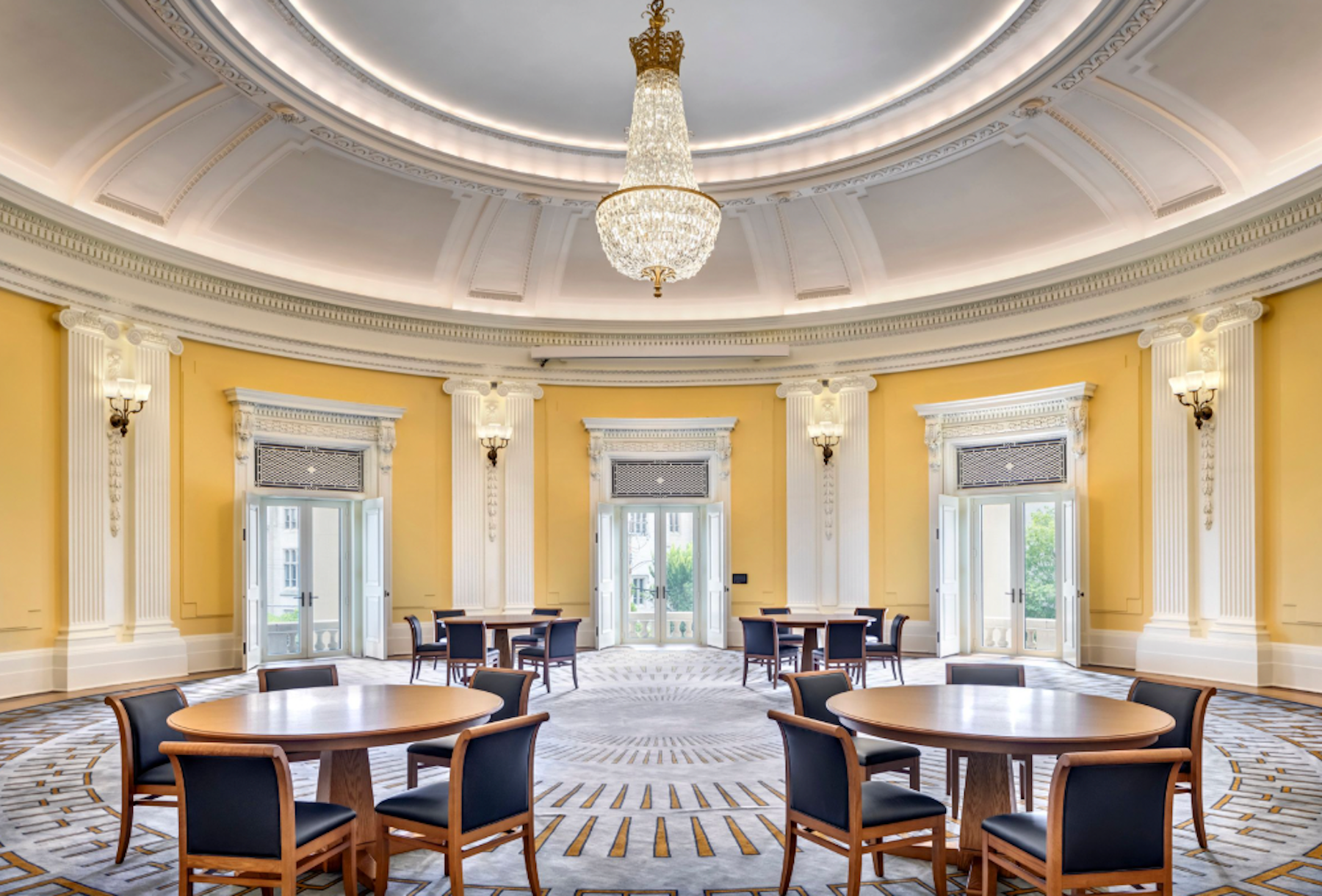
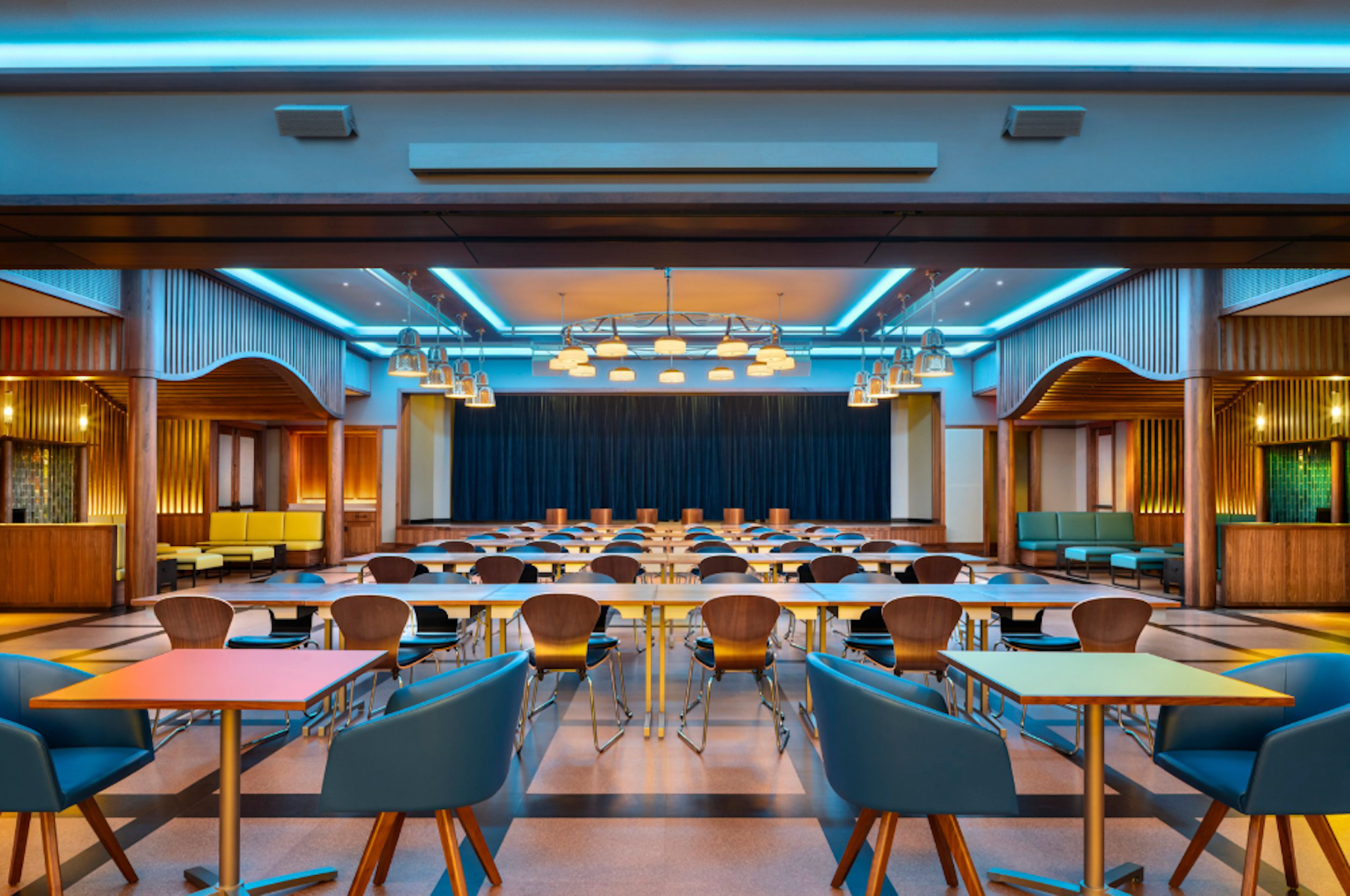
Building Team
Architect of Record: Robert A.M. Stern Architects
Structural Engineer: Robert Silman Associates
MEP Engineer: AKF Group, LLC
Civil Engineer: Langan
Construction Manager: Dimeo Construction Company
Project Statement
Robert A.M. Stern Architects (RAMSA) unveils the design of their renovation and restoration of the Schwarzman Center at Yale University. Located in the Bicentennial Building’s north wing in the heart of Yale University’s campus, the centre recently opened its doors in fall of 2021 after a significant overhaul of the building, which began in 2017.
Yale University engaged renowned architecture firm, Robert A.M. Stern Architects, to lead the transformation of the Schwarzman Center, including the historical preservation and the design of the new additions. The RAMSA team, led by Partners Graham Wyatt, Melissa DelVecchio and Jennifer Stone, worked with an advisory board consisting of prominent individuals in the arts world, creating connections for Yale and the arts community to help sustain programming at the Schwarzman Center. Before the building closed for construction, a series of preview events were held to highlight future possible events in the renovated building, including a hackathon, a dinner presentation on sustainability, and a presentation on Prince and David Bowie’s contributions to the musical world.
“It’s been an honor to work with Yale University to restore and reinvent Yale’s Bicentennial Buildings, creating a new campus center that connects students, faculty, staff, alumni and visitors for the first time ever through dining and arts events. The preservation of these important historic spaces -- at the heart of the Yale experience -- along with new additions that support arts and cultural programming, will enrich student life, building new bridges across Yale’s community,” says Melissa DelVecchio, Partner at RAMSA. "The flexible and technologically-advanced spaces further Yale’s values – promoting cross-disciplinary collaboration, fostering a sense of belonging, and elevating the importance of wellness. We look forward to seeing Yale’s vibrant culture come to life at the Schwarzman Center."
As one of the first buildings built by Yale, its original purpose was to unite students from Yale College and the Sheffield Scientific School. As Yale grew and expanded, the intellectual and social focus of the student body grew increasingly disconnected. Today, the renovated Schwarzman Center achieves a multitude of goals: bringing Yale students together as one unit; serving as a hub of intellectual and student life; encouraging socialization through dining, events and performances; and fostering relationships among the wider Yale community.
The idea for a new campus center came about thanks to a study conducted by Yale, which indicated a high level of student support. In addition, there was an urgent need to renovate the Schwarzman Center; the floors in the Commons – the University’s historic dining hall – were also falling into severe disrepair as the original cinder fill terrazzo floor was structurally unsound and could no longer bear the weight of a dining hall. The Schwarzman Center renovation was made possible thanks to Blackstone CEO Stephen Schwarzman, a Yale graduate, who donated over $100 million to the project, both for the building and for support programs.
The building’s physical expression represents the university’s mission of combining historic preservation with modern technology and increased social space. RAMSA’s preservation efforts focused on the Commons, all the spaces in Memorial Hall, including the war memorial – which inspired Maya Lin’s design for the Vietnam Veteran’s memorial – the President’s Room, as well as the Dome Room, which was a yearbook office for 30 years.
For the exterior, in keeping with the design team’s goal of carving out new programmatic spaces, the team removed the one-storey underground moat space along Grove Street and built a three-storey addition, which was inspired by the original proposal from Carrère & Hastings that detailed an addition to the building’s original construction just a few years after its completion. An underground addition was also added and the new Hewitt Plaza was created.
The RAMSA team paid particular attention to details in order to honor the history and traditions of the Center while carrying it forward into the future. This includes the warm wood of the Commons which combines the traditional Yale aesthetic with modern detailing. The remaining marks on the brick after cleaning created a patina representing hundreds of years as an active university. All historic roof paneling was maintained and lighting fixtures were restored, as was the decorative painting on the wooden trusses. In Memorial Hall, asbestos was removed from the President’s Room and classical detailing was reinstated, and lighting was fixed to enhance accessibility for dining and catering. In the Dome Room, old plasterwork was replicated with molding.
This renovation addressed many accessibility issues in the historic building. A new ramp was added in the gallery to create accessible connections to the outdoor Hewitt Plaza. In addition, the design team added two sets of public elevators to the Commons space, which became the main core of accessibility for the building.
A crowning achievement was the ambitious renovation of the 66-ft-high Commons, which was largely preserved and cleaned of a century’s worth of smoke and grime. The foundation, which had fallen into severe disrepair, was also dug up and lowered 30 inches to address the damage. This also allowed for new programming space to be created while ensuring structural soundness.
The Commons was also successfully optimized for performance. As it had previously relied on people coming in and out for heating and cooling, it was updated with a new, hidden, performance-ready HVAC system. The team also added targeted lighting, integrated projection and blackout shades.
The programming supported the campus’ mission by expanding dining and performance spaces. The team introduced the Underground, a casual dining space with a stage, backstage area, and partition. The Dome Room is another flexible performance space, and doubles as a space for masterclasses, events and lectures. Other new casual dining options include the Well, a bar occupying the former food storage space under the Rotunda and the Bow-Wow, a new food shop. The President’s Room was also entirely renovated and designed to allow for important events hosted in the Yale calendar.
Client: Yale University
Completed: 2020
Lead Architects: Graham Wyatt, Melissa DelVecchio, Jennifer Stone
Photography: Francis Dzikowski/OTTO
Size: 123,000 sq. ft.
Related Stories
| Nov 3, 2010
Recreation center targets student health, earns LEED Platinum
Not only is the student recreation center at the University of Arizona, Tucson, the hub of student life but its new 54,000-sf addition is also super-green, having recently attained LEED Platinum certification.
| Nov 3, 2010
Virginia biofuel research center moving along
The Sustainable Energy Technology Center has broken ground in October on the Danville, Va., campus of the Institute for Advanced Learning and Research. The 25,000-sf facility will be used to develop enhanced bio-based fuels, and will house research laboratories, support labs, graduate student research space, and faculty offices. Rainwater harvesting, a vegetated roof, low-VOC and recycled materials, photovoltaic panels, high-efficiency plumbing fixtures and water-saving systems, and LED light fixtures will be deployed. Dewberry served as lead architect, with Lord Aeck & Sargent serving as laboratory designer and sustainability consultant. Perigon Engineering consulted on high-bay process labs. New Atlantic Contracting is building the facility.
| Nov 3, 2010
Dining center cooks up LEED Platinum rating
Students at Bowling Green State University in Ohio will be eating in a new LEED Platinum multiuse dining center next fall. The 30,000-sf McDonald Dining Center will have a 700-seat main dining room, a quick-service restaurant, retail space, and multiple areas for students to gather inside and out, including a fire pit and several patios—one of them on the rooftop.
| Nov 1, 2010
John Pearce: First thing I tell designers: Do your homework!
John Pearce, FAIA, University Architect at Duke University, Durham, N.C., tells BD+C’s Robert Cassidy about the school’s construction plans and sustainability efforts, how to land work at Duke, and why he’s proceeding with caution when it comes to BIM.
| Oct 13, 2010
Editorial
The AEC industry shares a widespread obsession with the new. New is fresh. New is youthful. New is cool. But “old” or “slightly used” can be financially profitable and professionally rewarding, too.
| Oct 13, 2010
Campus building gives students a taste of the business world
William R. Hough Hall is the new home of the Warrington College of Business Administration at the University of Florida in Gainesville. The $17.6 million, 70,000-sf building gives students access to the latest technology, including a lab that simulates the stock exchange.
| Oct 13, 2010
Science building supports enrollment increases
The new Kluge-Moses Science Building at Piedmont Virginia Community College, in Charlottesville, is part of a campus update designed and managed by the Lukmire Partnership. The 34,000-sf building is designed to be both a focal point of the college and a recruitment mechanism to get more students enrolling in healthcare programs.
| Oct 13, 2010
Residences bring students, faculty together in the Middle East
A new residence complex is in design for United Arab Emirates University in Al Ain, UAE, near Abu Dhabi. Plans for the 120-acre mixed-use development include 710 clustered townhomes and apartments for students and faculty and common areas for community activities.
| Oct 13, 2010
New health center to focus on education and awareness
Construction is getting pumped up at the new Anschutz Health and Wellness Center at the University of Colorado, Denver. The four-story, 94,000-sf building will focus on healthy lifestyles and disease prevention.
| Oct 13, 2010
Community college plans new campus building
Construction is moving along on Hudson County Community College’s North Hudson Campus Center in Union City, N.J. The seven-story, 92,000-sf building will be the first higher education facility in the city.


